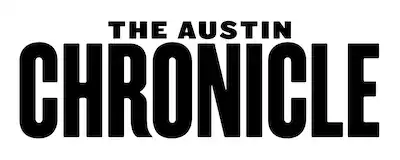https://www.austinchronicle.com/news/2018-02-16/introducing-codenext-draft-three/
Introducing CodeNEXT Draft Three
Now the fun begins
By Sarah Marloff, February 16, 2018, News
The final CodeNEXT draft has been public since Monday evening, and wouldn't you know that the early reviews are mixed. The city's attempt to rewrite its antiquated land development code has faced its share of opinions since first arriving in draft form last January. As invested parties make hay of the latest draft (now officially a "staff policy recommendation"), land use commissioners on Tuesday seemed to embody the city's ambivalence.
Draft three will surpass 1,500 pages – 200 more than v.2. (Hard copies won't be available until next week.) But CodeNEXT lead Greg Guernsey insists the latest iteration is more user-friendly. Opticos Design consultant John Miki noted how it consolidates information so users can find the "majority" of what they need to know on a handful of pages. Since CodeNEXT's mission, as consultant Peter Park put it, is to improve on today's code, the language and formatting have been cleaned up, and definitions have been pulled together into a new chapter, the 13th. Miki confirmed his team went through the draft to refine definitions and avoid the second draft's pitfall of definitions often being incomplete or missing.
During Monday's unveiling, and again on Tuesday night, staff touted draft three for its attention toward housing neighborhood preservation while still meeting the needs laid out in the city's Strategic Housing Blueprint. Neighborhood preservation has been one of two primary rallying cries for those opposed to the rewrite; now it seems code writers have worked to appease that voice. In an attempt to incentivize retention of existing houses, the draft allows homeowners to add a 750-square-foot accessory dwelling unit on their lot even if it exceeds the 0.4 floor-to-area ratio (the limit to what can be built on a lot), if the original house is more than 10 years old. Miki said this gives homeowners more opportunity and incentive to expand on their lot while still preserving older homes. Construction on these lots cannot exceed the 40% FAR if the original house is eventually demolished, even if the property owner later sells the lot. Miki said this will make it "pretty hard" to "game the system." Planning Commissioner Patricia Seeger questioned on Tuesday how that preservation of older houses would be enforced, to which Guernsey noted that city databases monitor the lots.
In general, Guernsey believes the latest draft will make it easier for property owners to build ADUs. He praised granny flats on Monday as a tool to keep multiple generations "together in one place," create additional revenue streams for homeowners, and provide people the "opportunity to move into places they love or want to live," while still preserving neighborhood character. He also called them a way to "gradually introduce more growth into some areas of the city where it's more difficult to build new houses."
The latest draft extends small lot amnesty protections, making the 2,700 existing lots between 5,000 and 5,750 square feet legal under CodeNEXT, as opposed to non-conforming. Miki said these smaller, legal lots could be used as tools in new construction sites. Planning Commissioner James Shieh worried that the cumulative effects could end up changing neighborhood character if developers decide to break up existing larger lots to make them two separate smaller parcels. City staffer Jerry Rusthoven agreed this was an issue to continue exploring.
To achieve Imagine Austin's plan for a greater diversity of housing, draft three introduces more mixed-use zoning to the city's centers and corridors currently zoned for commercial use only. Developers will only be able to build mixed use if they opt into the density bonus program to provide some affordable units (at 60% median family income to rent, 80% MFI to own). Consultants say this allows for more bonus area, which results in more affordable units. Today's 10 density bonus programs cover 5,600 city acres; draft three proposes offering DBPs throughout greater swaths of the city, to cover 30,000 acres (up from 24,100 in draft two). The types of bonuses will vary by zone, rather than specific neighborhoods, which in theory will make it easier to implement and disperse.
Austin Community Design and Development Center Executive Director Nicole Joslin said on Tuesday that she feels confident that what's in the current language is "workable" to provide a greater diversity and number of affordable housing units. She'd "like to see more areas zoned for missing middle housing," citing the "really big impact on affordability" that it could have. "But the text is there, and we can work on the text to get a robust capacity."
Now begins the citywide breakdown. With 1,500 pages of text, and an infinite number of combinations of mapping decisions, there will be a lot to unravel. Monday's release means Guernsey has all but handed the reins over to the land use commissions and City Council. "Now the fun begins," he told commissioners on Tuesday night. The public is still invited to comment on the latest draft; however, staff will now siphon comments to the commissions and Council. Those commissions are currently working to set a date (or several) for public hearings and additional work sessions that will provide residents and stakeholders the needed time to dive in and digest the language.
Copyright © 2025 Austin Chronicle Corporation. All rights reserved.
